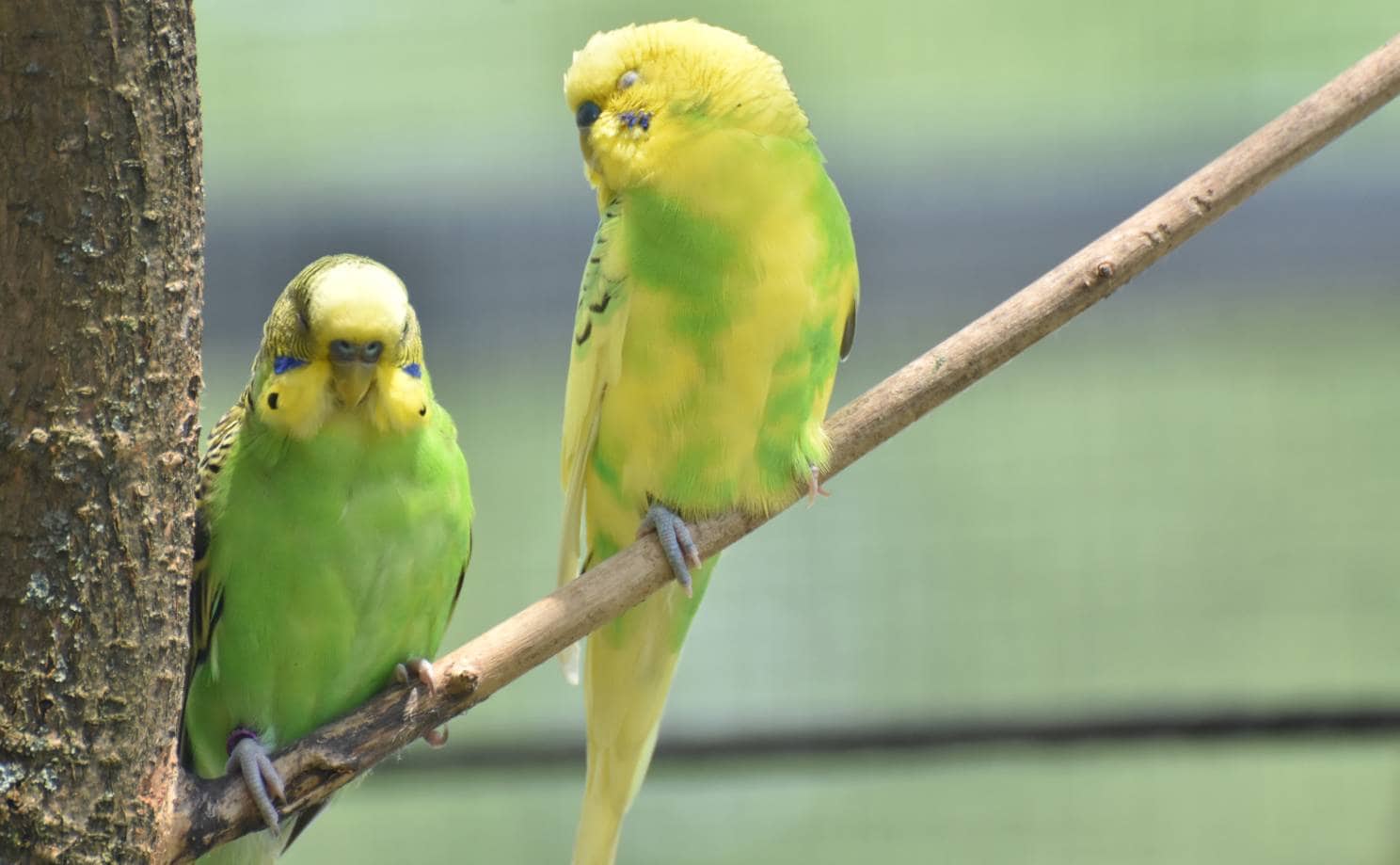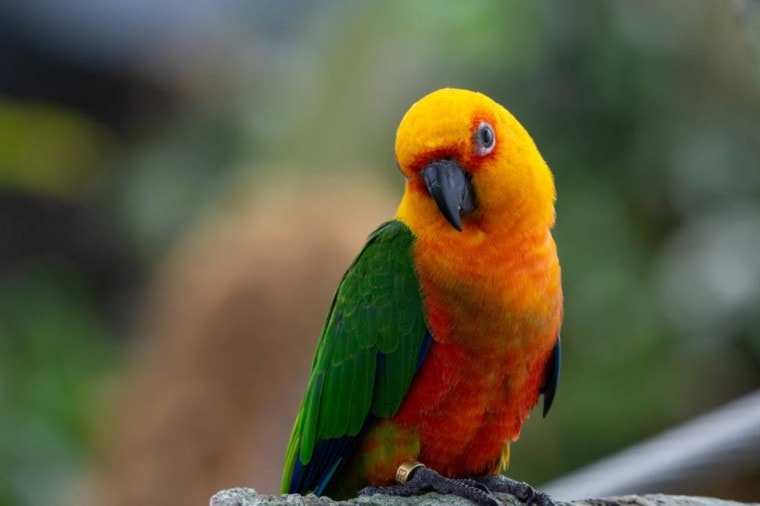
Conures are comical and fun-loving birds. They are popular pet birds due to their eye-catching colors and exciting personalities. These small to medium parrots with long tail feathers range in size from 10–20 inches, depending on the conure species. This bird species is one of the most varied groups of parrots. With over 100 different species and subspecies, they charm people with their playfulness and inquisitive personalities. When properly taken care of, conures can live up to 20–30 years.
A lot of conure owners will notice that their pet birds bob their heads. This body language movement is entertaining and perfectly normal for this bird species. But what causes this behavior?
Here are some reasons why conures might bob their heads.
The 10 Reasons Why Your Conure Bobs Its Head
Conures come with various characteristics that make them charming. They enjoy having their head scratched or burying themselves in their owner’s shirts, jackets, and sweaters. On top of these characteristics, this bird is also known for bobbing its head.
Let’s find out why.
1. The Birds Are Excited
When your conure bird is excited to see you after you come back from work or vacation, they’ll tend to rapidly bob their head up and down in celebration. On top of that, the bird might make high-pitched whistling sounds or attempt to talk. This rapid head movement is an indicator that the conure is happy to see you.
They’ll also bob their head if they are excited about something such as food or a treat they like. Most conures also get happy when they hear music.
They could start dancing as they bob their heads. If you’ve not seen your pet for a long time, this behavior is normal.

2. The Birds Are Anxious
Head bobbing can indicate that a bird is restless and wants to go somewhere. They use head bobbing as a means of expression. While this is not the only reason, you should check for other factors that could influence this behavior.
3. They Are Bonding with You
Conures bob their heads to bond with you. They show this by regurgitating their food.
This typically happens when an adult bird brings up partially digested food to feed a mate or chicks. Therefore, if you have a close bond with your bird, they’ll tend to regurgitate similarly as a gesture that they care about you.
Although this method is unnecessary, you should acknowledge the sweet gesture from your pet bird and thank them; otherwise, they’ll feel rejected. When your bird starts regurgitation, it’s important to note that it’s different from vomiting. If your conure is vomiting, you need to take it to the vet for medical attention.
4. They Could Be Sick
If your conure bobs their head frequently, you should pay attention to any other accompanying body movements or behaviors. For instance, if your bird is moving its head up and down while making gagging noises with its beaks open, it could be sick.
This behavior could be triggered by chemical sprays, household cleaners or perfumes, or candles in the house that affect their stomach. To stop these movements, you’ll need to stop using said products.
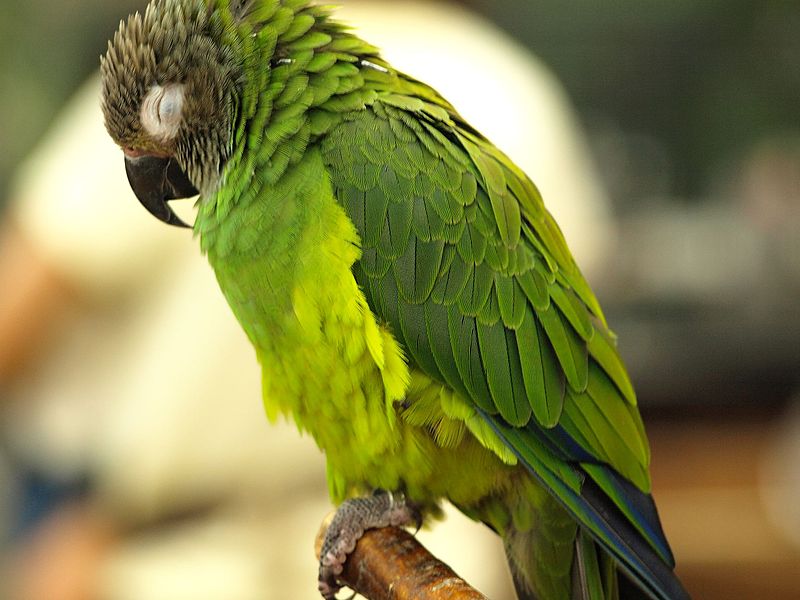
5. The Male Conures Want to Mate
When the head bobbing starts, you need to note whether it’s the male or female bird. Male conures will bob their heads up and down rapidly when they want to mate.
In addition, they’ll climb to the highest point in the cage and bang their beaks across the bars. This behavior can be alarming if it’s the first time, but it’s completely normal.
The head bobbing should end when the mating season is over and testosterone levels have gone down. Therefore, if you are concerned about your male conure, give it time until the mating season is over.
6. They Are Hungry
Hungry pet birds become very restless when they have not been fed. Baby conures are the regular culprits for this behavior. They signal their parents and beg for food by bobbing their heads.
Therefore, if you have juvenile conures, you should watch out for these signals as a sign that your pet birds need food.
7. They Are Angry
Birds express themselves in a lot of ways when they are angry or agitated. For instance, conures have a signature sound, a high-pitched screech, which they vocalize when they are excited, angry, startled, or want attention.
Apart from the screeching, these birds express their anger by bobbing their heads. They get angry when they don’t like something or are not getting enough attention from their owners. You can solve this by dealing with the problem at hand to stop the bird from becoming angrier.
8. The Female Wants to Attract Males
Like the male conures, females also tend to move their heads up and down rapidly when they want to attract males for mating. They also raise their tail feathers in the air.
For females, this can cause egg binding or egg-laying. To stop these behaviors, towel her cage longer in the mornings to stop her head from shaking.
- See Also: How to Read Conure Body Language
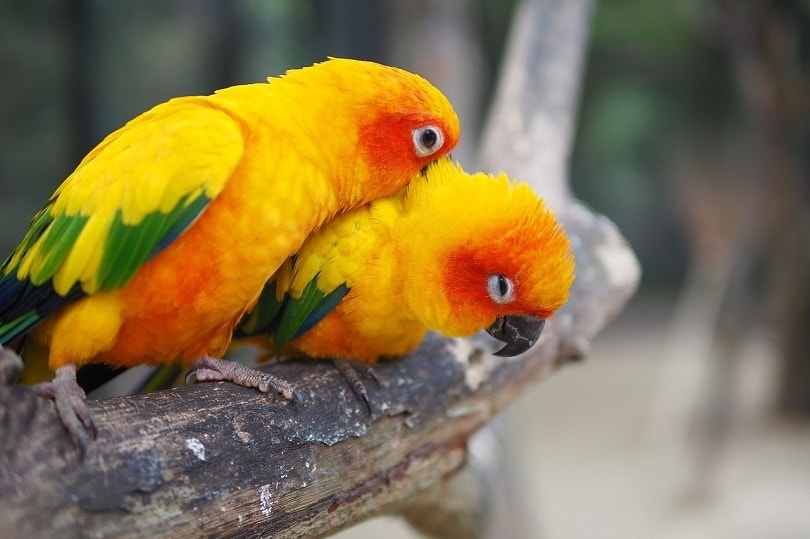
9. They Are Showing Affection
If your conure parrot has “fallen in love” or bonded with another bird, it’ll start bobbing its head. They also shake the other bird’s beak while making retching noises. This behavior is expected when these birds get into courtship.
It indicates that your conure is regurgitating food to his mate to express extreme affection. However, if you don’t want your conures to start mating, it’s best to separate them immediately if you spot this food-sharing behavior.
10. They Want Attention
Juvenile conures learn from very early on that bobbing their heads will get them food. Once they learn that this is a way to gain attention from their owners and parents, they stick with this behavior as they grow older. Therefore, most conures will bob their heads when they feel like they are being ignored.
The only way to solve this is by spending time with your pet bird and socializing them with other birds. This will give them enough companionship and stop the behavior.
How Can You Reduce or Stop Your Conure From Bobbing Its Head?
We’ve identified why your conure might be bobbing their head. While this behavior can be entertaining and is typically normal, there are ways to reduce the occurrence.
1. Ensure Your Bird Is Well Fed
Feeding your conures, especially the young ones, will stop this behavior. These birds use this method as a way to beg for food. Therefore, it’s best to ensure that your bird has food at all times.
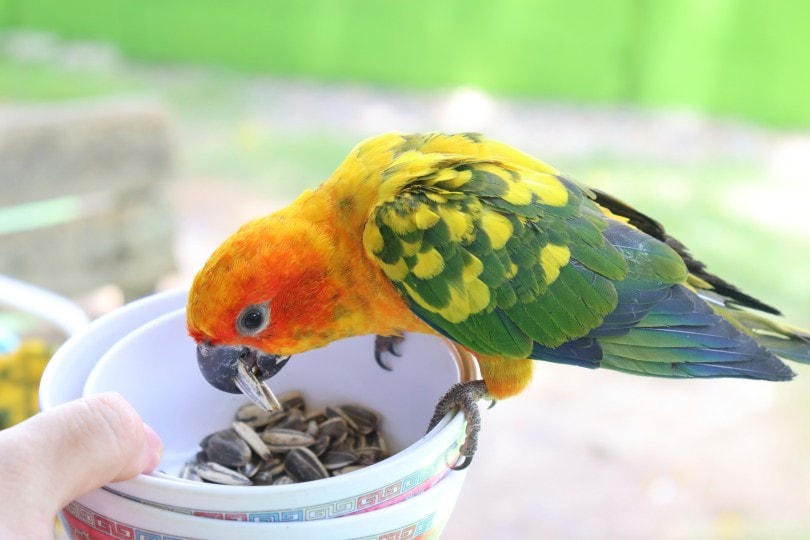
2. Provide Companionship
These birds enjoy the company of their owner and families. As active birds, they want to play and be petted by their caretaker.
Once they realize they are not getting the attention they want, these birds resort to head bobbing and other behaviors such as screaming. Therefore, if you can, try and spend some time with your pet bird to make them feel safe and happy.
3. Keep Them Occupied
You can provide toys for your conures to keep them busy. In addition, have the cage installed with several perches and ladders for the bird to jump and play without any limitations. As long as they get their exercise needs, they’ll tend to be less agitated and be in better moods.
When they are busy, they’ll be less angry and anxious; as a result, it leads to less head bobbing. If you have children, they can engage with them and play as a source of entertainment. When a bird is not physically and mentally stimulated, they get bored quickly and act aggressively.
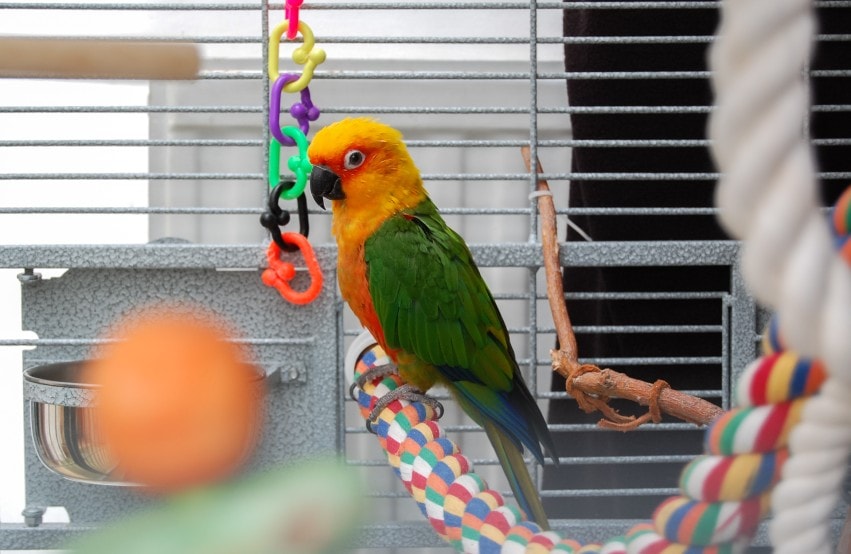
How Vocal Are Conures?
Conures use head bobbing as a means of communication. However, this doesn’t mean that they are not vocal.
Like other species in the parrot family, these birds also have their signature high-pitched screech. They emit this sound when they want attention or when they get excited or scared.
When the bird screeches, most owners tend to give attention to the bird immediately. This quick response can reinforce unnecessary attention-seeking and screeching if the owner keeps rushing to check on the bird.
What Other Body Movements Should You Look Out For?
Apart from head bobbing, there are other normal body movements that conures make. All these movements communicate how the bird is feeling at the moment. Some conures will combine the rapid head movement with some of these actions.
Here are some of them.
Beak Grinding
Like parrots, these birds grind their beaks before drifting off to sleep. This behavior is a sign that they are comfortable.
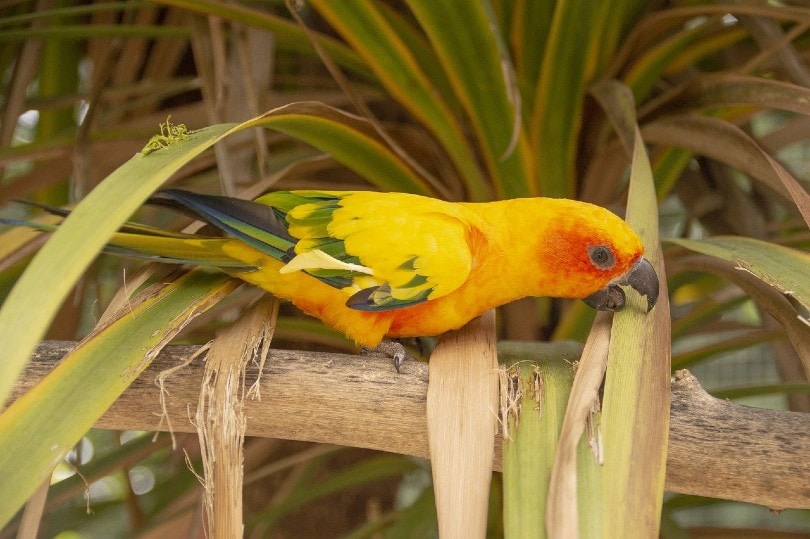
Napping
These birds take what is referred to as catnaps throughout the day. Your conure might nap on a perch while standing on one leg, which is completely normal. If they fluff their feathers, they might be ill or feeling cold.
Aggression
Aggression is normal behavior among many bird species. Your conure might be aggressive because they are hormonal, which makes them territorial.
They might also be acting out of jealousy, especially if you are paying attention to another pet bird. In addition, this behavior can be fueled by anger if they don’t like how they are being handled.
The aggression goes down as soon as you deal with the triggers.
Begging
Drawing this behavior from childhood, conure birds and most birds maintain the begging behavior. They resort to this behavior because they know it has worked before.
When begging, the bird stays in a crouched position, bobs the head while the wings are up, and starts making chick noises. If you don’t indulge them, they’ll eventually stop this behavior.
 Origin and Background
Origin and Background
The conure species is native to South America. The most popular species include the Sun Conure, Blue-crowned, Jenday, Green-cheeked Conure, and Nanday Conures. Unlike parrots, conures get along with multiple family members when socialized well.
Aratinga and Patagonians are the best choices for families with children because they are affectionate and gentle.

Physical Appearance
Conures are known for their slender build and long, pointed tail. Because of their small size and attractive personalities, they make great family pets. Standing out as colorful pet birds, their feathers come in an assortment of colors from blue, red, green, orange, to yellow.
As a result of their coloring, these birds are often compared with the macaw. They have a distinctive feature that sets them apart; conures lack feathers around the eyes, known as an eye ring.
Temperament
Conures can be very playful and very loud. Compared to other birds, this breed is more inclined to be curious and bold.
To keep them happy, you have to provide these active birds with plenty of toys that keep them occupied throughout the day. Their outgoing personality is perfect for families who have children.
However, due to their tiny size, you’ll need to train your children to handle these birds properly without forcing any interactions. Most conures are natural entertainers. They will dance back and forth, mimic people’s movements, or climb in your shirt.
They are also highly intelligent, meaning you can teach them how to perform tricks using positive reinforcement. You can train them how to shake hands, wave, and so much more. Although their vocabularies are not as extensive as other parrot species, conures can speak a few words.
Conures love being at the center of the action; therefore, they will hang around the family as much as possible. These birds are patient with children, a critical factor that makes them good family pets.
Unlike bigger birds that only like being touched on the head and neck, conures are comfortable being petted everywhere. They only need proper socialization to get along with other birds and your entire family.

- You may also want to read more about: Red Factor Sun Conure
Final Thoughts
Conure birds are some of the most beautiful birds you could keep as a pet. They are friendly, active, and enjoy interacting with the owner. However, they have some distinct behavior that involves head bobbing.
This movement is common among these birds, and they use it to communicate how they are feeling or seeking attention.
Head bobbing is normal, but you can find ways to reduce it. By paying attention to your pet, you can easily manage its behaviors and reduce aggression.
Featured Image Credit: Kingma, Shutterstock






